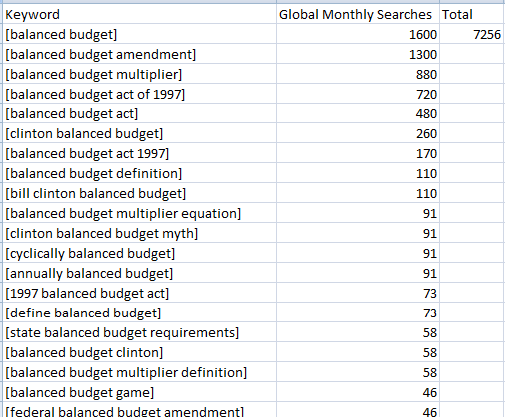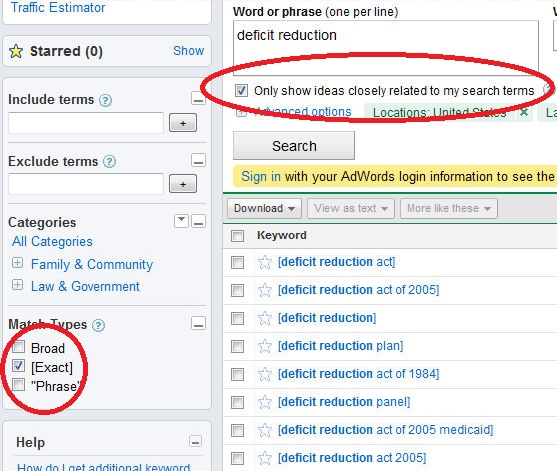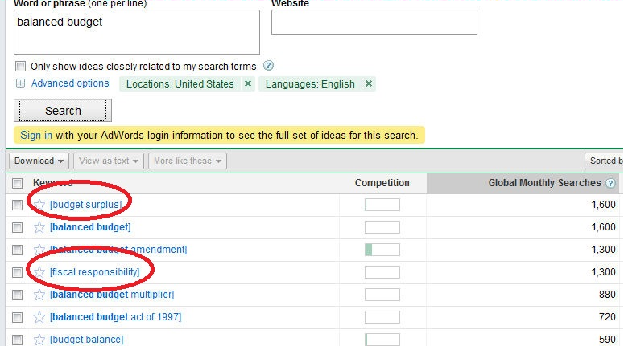ProBlogger: Leverage the Long Tail of Search on Your Blog |  |
| Leverage the Long Tail of Search on Your Blog Posted: 12 May 2011 06:04 AM PDT This guest post is by Eric Enge of Stone Temple Consulting. Not getting all the search traffic you would like to get to your blog? One way to improve your results is to tap into long tail search terms to use in your posts. This is not always that easy to do, so today I will explore some ideas of ways to tap into that data. One reason why this is such an attractive thing to do is that the long tail actually has more traffic in it than the major “head” terms which are the first thing we all think of for a particular topic. The popular theory is that the long tail represents about 70% of all search traffic. These are the search terms that we don’t normally think of. Here is the four-step process I usually use to explain it to people:
Since this long tail has so much volume in it, let’s figure out how to tap into it. Develop the right mindsetFirst and foremost, let’s define the way we should be thinking about the problem. We are discussing how to leverage the long tail within your blog. Blog posts are natural gold mines for long tail search, simply because they contain lots of unique original text that is presumably related to the topic of the post. The search engines are naturally going to process all of that text to figure out what user search queries your post may be relevant to. They do an excellent job of matching you up with a variety of potential searches already. Our task is to make their job easier and help them match your post up with more relevant queries. In addition, you probably don’t want to spend several hours doing keyword research for each post. This post is going to focus on the strategy for accessing the long tail, but how to do it with about 15 minutes of keyword research. Makeup of the long tailHow can I quickly get a sense as to what will be in the long tail for my topic? It turns out that this is pretty easy to figure out. For example, if you are writing a blog post about the deficit in the USA, and you do some keyword research using the Google Adwords keyword tool, you will find that the phrase “balanced budget” has more search volume on it than “deficit reduction.” Let’s look at the numbers for “balanced budget:” Next, here is the output from the Adwords Keyword Tool for “deficit reduction:” Notice the correlation. “Balanced budget” has 1,600 total searches, and the largest variant of “deficit reduction” has 880 searches. In addition, all the variants of “balanced budget” had 7,256 searches and all the variants of “deficit reduction” had 3,341 searches. This is our first important conclusion: the most long tail terms are associated with the biggest head term. So the first step in leveraging the long tail of search is picking the right head term. You should use this head term in the title of your web page in which the post appears, as well as the post title itself. An important note on using the Adwords Keyword ToolI really like this tool because it does give us a crude window into the real data from Google. However, to get the right data from it, you need to configure it properly. To see how to do that, reference my screen shot below: First, notice that I checked the box up top marked “Only show ideas closely related to my search terms”. For purposes of this analysis, I don't want to have terms which are not closely related in my list. Also, over on the left, notice that I have picked the “Exact” match type, and unchecked the other boxes. The tool will default to “Broad” match when you first run it, and you can’t even configure this option until you run the tool the first time. So to do the query on “balanced” budget I had to run the tool once, it gave me broad match results, then I was able to scroll down and set the results to exact match. The reason for doing this is that the broad match setting means that the total query volumes shown for each keyword will include all the derivatives. I tested this and the phrase “deficit reduction” showed a volume of 12,100 instead of 880. The result is that the broad match setting tends to obscure the real data, from my perspective as an SEO. Implement major synonyms and similar termsWe have already given a good example of this. If we have titled our article using “balanced budget,” we should also find a way to include “deficit reduction” in the title, or if that is not possible, include a discussion of that in the post in a prominent way. That’s a good start, and that was one I was able to think of off the top of my head. How can I find more? Go back to the keyword tool and uncheck the “Only show ideas closely related to my search terms” box, and repeat your search. Here is what you get for “balanced budget:” Note the two items I circled. Two strong additional terms have emerged. Can I work a reference to a budget surplus or fiscal responsibility into my article? Once again, as we showed with the head terms, strong synonyms will feed a solid long tail. Understand the chunky middleThe rationale here is the same: a solid chunky middle will feed a fat tail. Looking back at our “deficit reduction” screen shot we can some examples of chunky middle terms: These are three great phrases that you might want to include in the article. Leverage the long tailThe best way to leverage the long tail of search in your post writing can be summarized as follows:
But, the most important thing is not to lose sight of the main task, which is to create great engaging content. Don’t let keyword research be the “tail that wags the dog.” Do some selective keyword research as outlined above, write a great article, and you will surely leverage the long tail effectively, and not had to spend three extra hours doing it. Also, if you use contract writers, make sure you keep them focused on writing high quality content as well. One of the dangers with providing keyword instructions to a writer before they begin writing an article is that it can bend their mind, and they start writing low quality articles no human wants to read. If you are using writers that can’t maintain that focus then consider replacing them. Another alternative is to not give them the keyword info and have that added in during editing the article after the first draft is written. Are you leveraging the long tail of search on your blog? Eric Enge is the President of Stone Temple Consulting, a 20 person SEO and PPC consulting firm with offices in Boston and Northern California. Eric is a crusty old veteran with 30 years working experience in technology and the Internet. STC provides Strategic SEO and PPC services to companies ranging from startups to Fortune 100 companies. Post from: ProBlogger Blog Tips Leverage the Long Tail of Search on Your Blog |
| You are subscribed to email updates from ProBlogger Blog Tips To stop receiving these emails, you may unsubscribe now. | Email delivery powered by Google |
| Google Inc., 20 West Kinzie, Chicago IL USA 60610 | |













0 comments:
Post a Comment